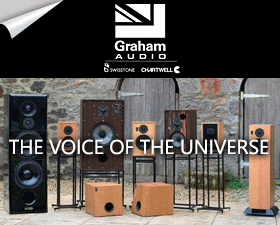A more fundamental problem is that it becomes more and more difficult to make high frequency sound as the wavelength becomes shorter and shorter. There are ultrasonic transducers that operate even into the Mhz range, but all are highly resonant (tuned) devices, not broad band like a loudspeaker.
In one sense tweeters can go down to 1Hz or DC, or up to 30-50Khz or higher, the fly in the ointment is they may also be -20 to -80dB or more down in level relative to say 10KHz (-60dB = 1/1000000 the power).
Also If one investigates “perceptual masking”, one finds that a louder lower tone can totally hide or make inaudible a higher lower level tone*.
Having the high tone so far down in level from both the ears response AND the drivers output makes this ultrasonic stuff undetectable normally.
*this is why raw THD measurements don’t correlate that well to what we hear, we are much more sensitive to high order and (with music) odd harmonics while a second of harmonic of 30- 50% may not be detectable at all with music being masked by the fundamental. Google / investigate “perceptual masking”.
Considering the shape of the equal loudness curve, means that if one hears anything at say 50Khz, it HAS to be VERY loud in order to be detectable at all against a silent background. Also, as correctly pointed out, the content of what is possible to record and play has a severe high frequency limit as well as the microphone end and speaker end of things.
What many maybe most have not done is sat down with an oscillator and honestly checked to see what frequency sounds like what sound starting at say 1Khz going up.
Most people I have been with, greatly over estimate both how high and how low various tones are, relative to the actual frequency.
This is instructive but be sure t start at around 1-4KHz at a low level as hifi tweeters can be burned out at an astonishingly low power sine wave.
Limit the drive Voltage to say 1V to be safe.
So far as causing intermodulation or other audible effects, that is a possibility.
The famous Apex aural exciter used a diode clipper and then the hf component from that clipper was added back into the direct signal to cause the desired effect.
Also, if one Google’s the “McGurke Effect” (a good one) and watches the video, it demonstrates the VERY strong connection between what we know and what our brain (as opposed to ears) hears. The only time you “hear” what is going into your ears correctly, is when you can’t see the stimulus and so removing the dominating prior knowledge.
The knowledge of just adding an X,Y or Z and having made an investment in time and or money, makes it very likely you will hear the difference, even if nothing of an electro-acoustic nature changed (and possibly nothing about the sound reaching your ears is different).
People think the expectation bias is about what you want, it can be, but our entire interpretation of reality, is based entirely on what we already know. Using that library and learned filtering, we weave a sensible picture out of the new things we encounter.
In “in the ear” measurement of a persons ears reveals comb filtering and a myriad of goofy looking things ALL of which would be show stopper flaws if you were making a loudspeaker, huge differences is the way things look depending on the right an left and up and down angles.
These for us are not flaws at all, we aren’t even aware of them as they are the ONLY thing we know AND it is those very things that through our lives we have learned , programmed into our automatic system and now, instead of hearing those flaws, THEY are what allow us to hear where and how high the source is, those things plus the two spatial vantage points allow our hearing center to make one acoustic image in 3d for us.
While room effects can mimic these things in measurements and can sound like a “real sounding” addition, they are not part of the recorded image and can’t be turned off.
The last problem one might face (not having a signal source with ultrasonic content) is the hf air absorption. For a 100Khz sound on a warm humid day, there is about 13dB of attenuation in the first 10 feet of travel though the air.
http://www.sengpielaudio.com/calculator-air.htm
Best,
Tom Danley
















